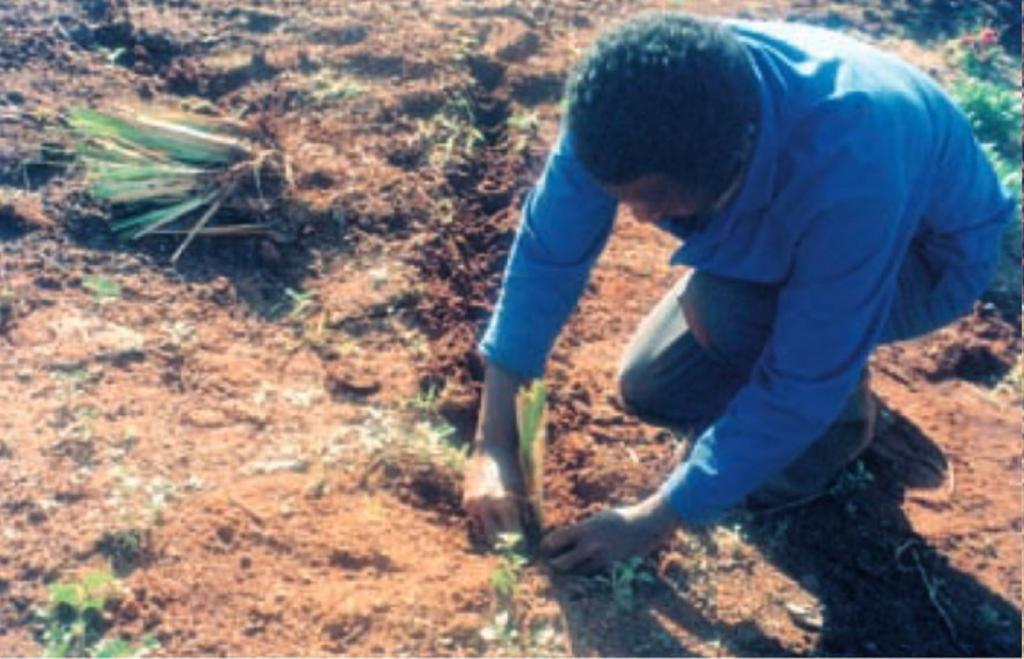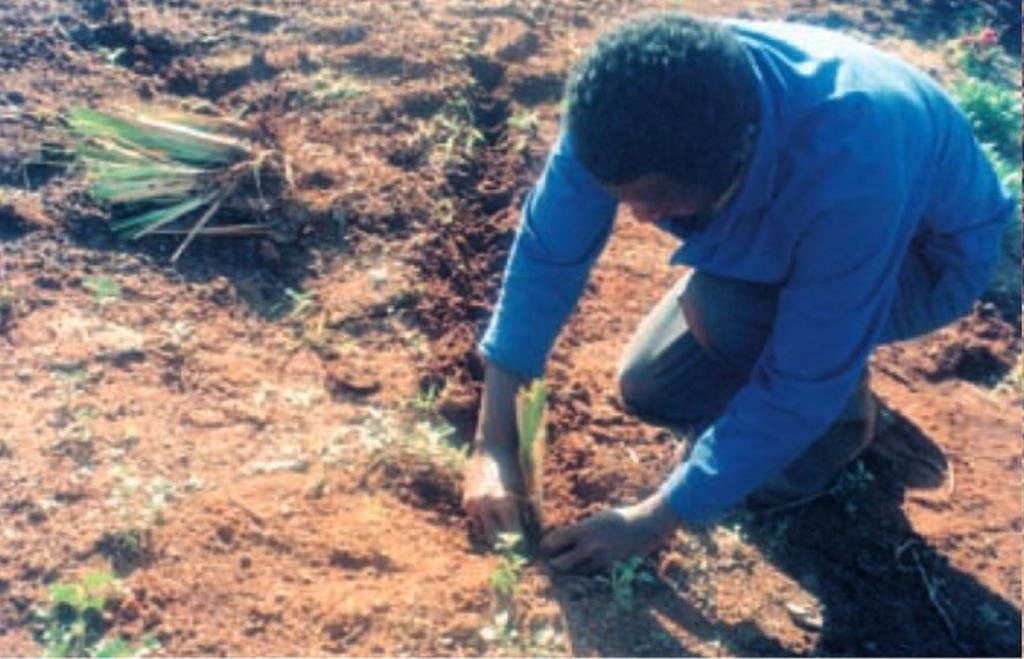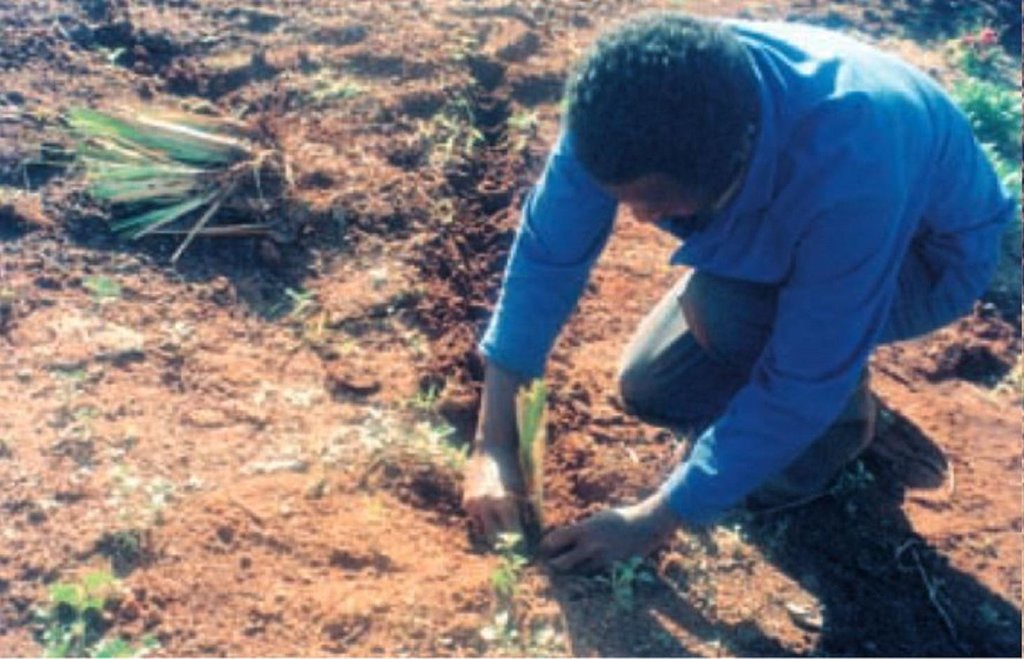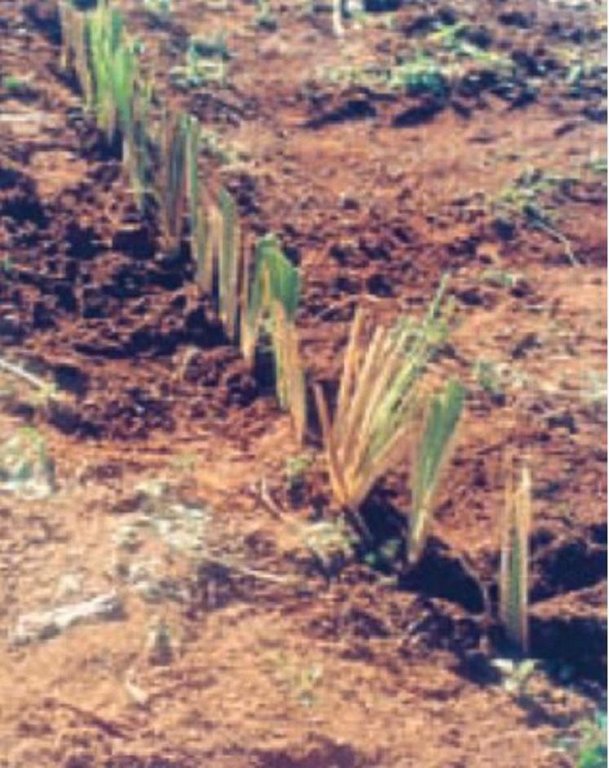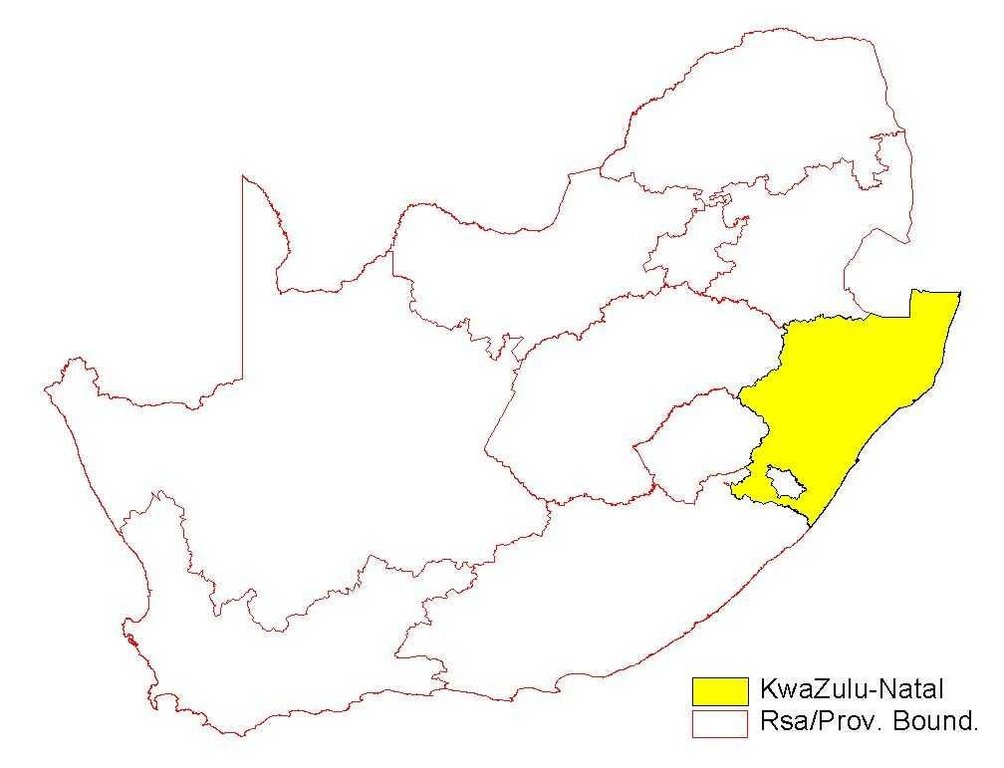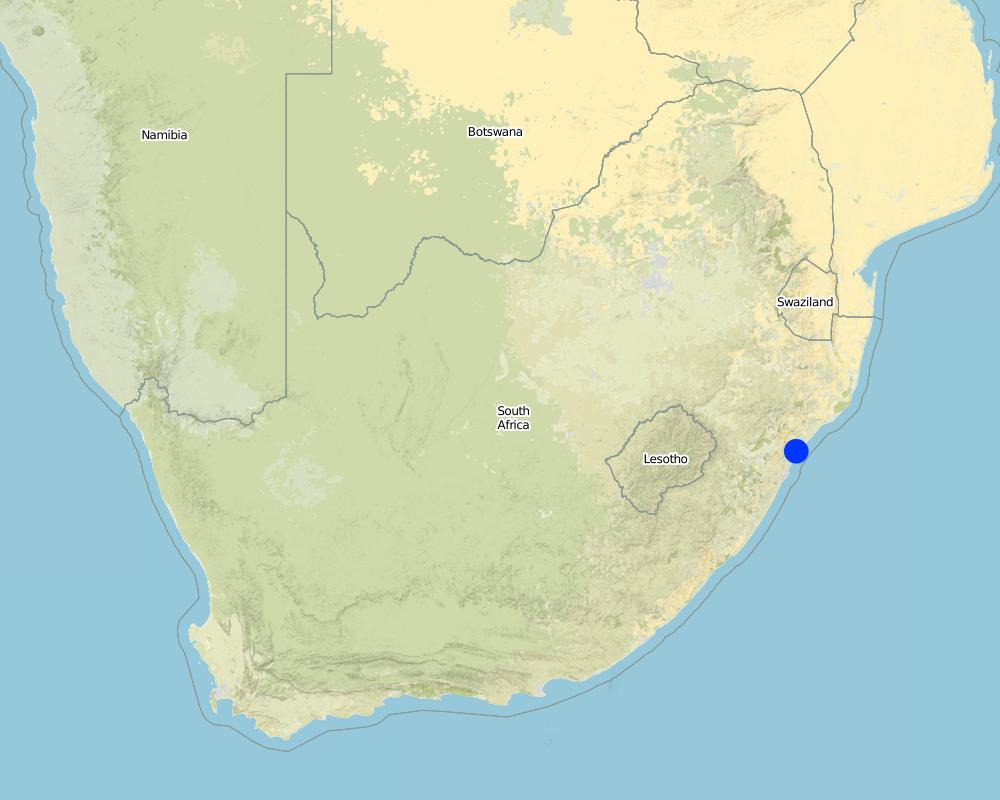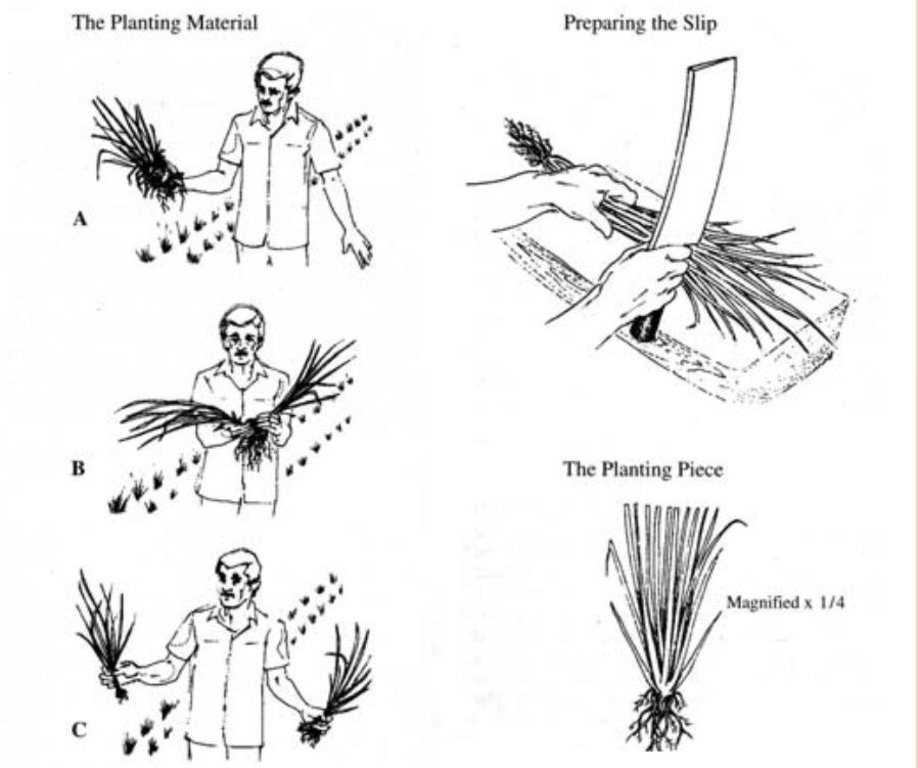Self teaching [South Africa]
- Creation:
- Update:
- Compiler: Philippe Zahner
- Editor: –
- Reviewers: Fabian Ottiger, Deborah Niggli
approaches_2611 - South Africa
View sections
Expand all Collapse all1. General information
1.2 Contact details of resource persons and institutions involved in the assessment and documentation of the Approach
SLM specialist:
van der Merwe Rinda
rinda@arc.agric.za
Institute for Soil, Climate and Water
P/Bag x79, 0001 Pretoria
South Africa
Name of project which facilitated the documentation/ evaluation of the Approach (if relevant)
Book project: where the land is greener - Case Studies and Analysis of Soil and Water Conservation Initiatives Worldwide (where the land is greener)Name of the institution(s) which facilitated the documentation/ evaluation of the Approach (if relevant)
Swiss Agency for Development and Cooperation (DEZA / COSUDE / DDC / SDC) - SwitzerlandName of the institution(s) which facilitated the documentation/ evaluation of the Approach (if relevant)
Institute for Soil, Climate & Water - South Africa1.3 Conditions regarding the use of data documented through WOCAT
The compiler and key resource person(s) accept the conditions regarding the use of data documented through WOCAT:
Yes
1.4 Reference(s) to Questionnaire(s) on SLM Technologies
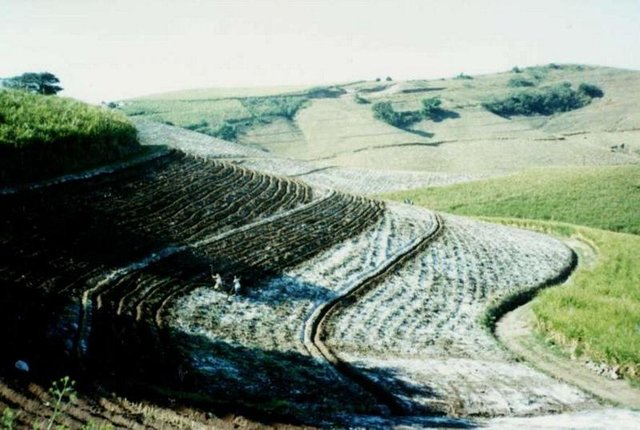
Vetiver grass soil conservation system [South Africa]
Contour lines of vetiver grass planted within fields of sugar cane, on stream banks and roadsides, to act as ‘hedges against erosion’.
- Compiler: Unknown User
2. Description of the SLM Approach
2.1 Short description of the Approach
Learning how to use vetiver grass as a vegetative conservation barrier through instructions from a booklet and hands-on practical experience.
2.2 Detailed description of the Approach
Detailed description of the Approach:
Aims / objectives: The manager of the farm was given a book and video on vetiver grass by the Mazda group from UK. His objective was to teach himself to improve his conservation system. Already he had a number of consercation strategies, including terracing, minimum tillage, mulching and strip-cropping, but he felt there was a need to better his syste,. Through self-teaching he gave himself an oppurtunity to do so.
There had been some vetiver plants on the farm for 40 years, and it held the soil in place where it grew. This vetiver grew into huge clumps comprising many splits (tillers). The book demonstrated how vetiver could be dug up, split and planted in a continuous barrier hedge for soil and water conservation. In other words, the book offered the possibility of improving on what was already there.
The approach therefore was to take ideas from a book, testing those ideas and see how they worked in practice. The approach has developed further by the farmer spreading his message to neighbours, some of whom have copied the system after visiting his farm and seeing the results for themselves. While the original handbook had been aimed especially at Indian farmers, subsequent to the successful experience of this particular farmer, a locally focussed handbook has been recently prepared in English and Zulu by the South African Vetiver Network.
2.3 Photos of the Approach
2.5 Country/ region/ locations where the Approach has been applied
Country:
South Africa
Region/ State/ Province:
Kwa-Zulu Natal
Further specification of location:
Lower Tugela District, South Africa
Map
×2.6 Dates of initiation and termination of the Approach
Indicate year of initiation:
1989
2.8 Main aims/ objectives of the Approach
The Approach focused on SLM only
test and try a new method by self-teaching and gaining hands-on experience
The SLM Approach addressed the following problems: lack of knowledge about alternative conservation technologies, need for a new and cheap supplement to existing forms of soil and water conservation within sugar cane, that could be tested and tried by the farmer himself without need for outside advice.
2.9 Conditions enabling or hindering implementation of the Technology/ Technologies applied under the Approach
availability/ access to financial resources and services
- hindering
Need to find a cheap supplement to existing SWC in sugar cane
Treatment through the SLM Approach: Discovery of vetiver grass barrier hedge technology described in a booklet
legal framework (land tenure, land and water use rights)
- enabling
The existing land ownership, land use rights / water rights greatly helped the approach implementation: Made own decision and started to implement immediately
3. Participation and roles of stakeholders involved
3.1 Stakeholders involved in the Approach and their roles
- local land users/ local communities
Working land users were mainly men (Also women, the men are used for more physical work (harder))
3.2 Involvement of local land users/ local communities in the different phases of the Approach
| Involvement of local land users/ local communities | Specify who was involved and describe activities | |
|---|---|---|
| initiation/ motivation | self-mobilization | looking for ideas |
| planning | self-mobilization | reading and thinking through the possibilities |
| implementation | self-mobilization | paying farm labourers to plant the grass |
| monitoring/ evaluation | self-mobilization | observation |
| Research | none | not applicable |
3.3 Flow chart (if available)
Description:
Establishing vetiver hedges: instructions on preparation for planting in the vetiver handbook.
Author:
World Bank, 1990
3.4 Decision-making on the selection of SLM Technology/ Technologies
Specify who decided on the selection of the Technology/ Technologies to be implemented:
- land users alone (self-initiative)
Explain:
land user driven (bottom-up). Literature
Decisions on the method of implementing the SLM Technology were made by by land users* alone (self-initiative / bottom-up). land user driven (bottom-up).
4. Technical support, capacity building, and knowledge management
4.1 Capacity building/ training
Was training provided to land users/ other stakeholders?
Yes
Specify who was trained:
- land users
If relevant, specify gender, age, status, ethnicity, etc.
self-taught through use of World Bank's vetiver handbook
Form of training:
- self-taught, hands-on experience
4.4 Monitoring and evaluation
Is monitoring and evaluation part of the Approach?
Yes
Comments:
bio-physical aspects were regular monitored by land users through observations; indicators: vetiver performance
technical aspects were ad hoc monitored by land users through observations
economic / production aspects were ad hoc monitored by land users through observations
area treated aspects were regular monitored by land users through measurements
no. of land users involved aspects were ad hoc monitored by land users through observations
There were no changes in the Approach as a result of monitoring and evaluation
There were no changes in the Technology as a result of monitoring and evaluation
5. Financing and external material support
5.1 Annual budget for the SLM component of the Approach
Comments (e.g. main sources of funding/ major donors):
Approach costs were met by the following donors: other (farmer itself): 100.0%
5.2 Financial/ material support provided to land users
Did land users receive financial/ material support for implementing the Technology/ Technologies?
No
5.3 Subsidies for specific inputs (including labour)
If labour by land users was a substantial input, was it:
- voluntary
5.4 Credit
Was credit provided under the Approach for SLM activities?
No
6. Impact analysis and concluding statements
6.1 Impacts of the Approach
Did the Approach help land users to implement and maintain SLM Technologies?
- No
- Yes, little
- Yes, moderately
- Yes, greatly
Land users can continue without support and at least a modest spontaneous expansion of adoption is expected.
Did other land users / projects adopt the Approach?
- No
- Yes, little
- Yes, moderately
- Yes, greatly
Three neighbouring farmers have adopted the technology throught their observations
6.3 Sustainability of Approach activities
Can the land users sustain what has been implemented through the Approach (without external support)?
- yes
If yes, describe how:
Land users can continue without support and at least a modest spontaneous expansion of adoption is expected.
6.4 Strengths/ advantages of the Approach
| Strengths/ advantages/ opportunities in the land user’s view |
|---|
| Neighbours can easily see and copy (How to sustain/ enhance this strength: Farmer-to-farmer visits could be promoted through self-help groups and associations.) |
| A very cheap method of extension/knowledge transfer (How to sustain/ enhance this strength: Produce and disseminate booklets and information on the internet more widely.) |
| Strengths/ advantages/ opportunities in the compiler’s or other key resource person’s view |
|---|
| A technical system devised from a handbook and experience rather than needing a project or intensive visits from extension agents (How to sustain/ enhance this strength: Make sure such handbooks are spread and available in local languages.) |
6.5 Weaknesses/ disadvantages of the Approach and ways of overcoming them
| Weaknesses/ disadvantages/ risks in the compiler’s or other key resource person’s view | How can they be overcome? |
|---|---|
| Not everyone has access to such teaching material or is literate | Spread literature and information more widley and in local languages both in written form and on the radio. |
7. References and links
7.1 Methods/ sources of information
- field visits, field surveys
- interviews with land users
7.2 References to available publications
Title, author, year, ISBN:
World Bank (1990): Vetiver Grass: The Hedge against Erosion
Available from where? Costs?
World Bank, Washington D.C.
Links and modules
Expand all Collapse allLinks

Vetiver grass soil conservation system [South Africa]
Contour lines of vetiver grass planted within fields of sugar cane, on stream banks and roadsides, to act as ‘hedges against erosion’.
- Compiler: Unknown User
Modules
No modules


